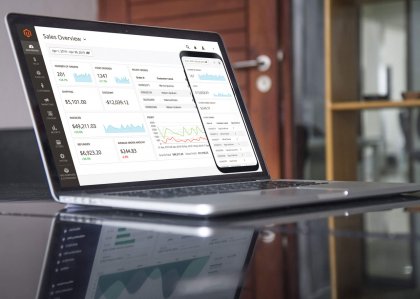Advanced reporting tools are extremely beneficial for any Magento 2 website. These tools provide essential insights into business analytics and generate reports that you can use to improve your sales. Today, we’re going to cover some of the most important features offered and explain their benefits for your Magento store.
Why All Magento 2 Admins Need Advanced Reporting
Running an eCommerce website without advanced reporting is possible. But running a successful eCommerce website without advanced reporting? Absolutely not.
In order to determine how well you’re doing, you have to get reports on your orders, sales, abandoned carts, earnings from each sold item, popular products, less popular ones, and so on. That way, you can tailor your output accordingly. Perhaps some of your products need a little boost, and some might as well be discontinued. You won’t know any of this if you do have reporting tools to guide you.
Of course, if you have been using Magento 2 without an advanced reporting tool, you know that the platform does include some reports out of the box. However, you probably also know that these reports are not particularly detailed and their insights are not always actionable. For instance, you can get a general picture of how your sales are doing, but you can’t really know the dynamics of those sales or get insights such as sales per location, by hour, or by product.
Realizing that there is a huge gap here and that the platform itself is insufficient when it comes to real sales analytics, developers have created advanced reporting tools that fill that gap and provide missing insights.
These tools help eCommerce store owners display and view complex reports on various sales parameters, generating indispensable insights into how the business is actually doing and where merchants can find room for improvement.
These reports are the main feature of reporting tools broken down into helpful charts and tables for a clearer understanding and quicker assessment of the situation. When deciding whether you need one for your store, pay attention to the number of reports, the quality and actual usability of insights you’ll be getting.
We find that in this process you need advice and help from an experienced team like 2buy1click, so let’s check out some of the essential advanced reporting features within the Advanced reporting tool that could help boost your Magento store and business.

Advanced Reporting Essential Features
Number of reports
Depending on your specific requirements and business model, there is quite a number of ready-made advanced reports that you can get. Bear in mind, though, not all businesses need that many reports and in some cases, a lot of the reports turn out to be not so useful for particular stores.
Customization options
Advanced reports tool generates a lot of reports and insights that can get confusing and can also be impractical if they’re not tailored to your needs. Therefore, the ideal tool should be fully customised in order to streamline the analytics process and provide better insights that coincide with the needs of your business. That is where our team comes in place.
The Advanced Reports further allows either picking a time period preset (daily, monthly, annually) or these ranges can be created manually. Another useful thing is that it allows adding and removing data tables, dimensions of group data, and so on. The reporting tool enables creating report view that you’re most comfortable with simply by dragging and dropping report elements around.
Filtering
Data filters are indispensable for any sort of analytics tool and advanced reports are no exception. Depending on the scope and nature of your store, you might find certain data essential while other data types may not be of much relevance to you. By creating custom filters and using the preset ones, simply by choosing the data range you need, the entire process will become much more efficient and save loads of time.
User-friendly dashboard
Quick access to all key functions of any tool is crucial. Merchants need to have all key indicators at hand, and an advanced reporting tool makes it possible by allowing simple adding of widgets containing key metrics right there on the dashboard of your store. The ability to have a customised dashboard makes it easier for you to follow your analytics and allows you to have all of your most important data in clear view all the time.
Types of Reports
As we mentioned earlier, advanced reports tool offers a variety of different reports but as you start using these reports, you will notice that some types of reports are more important and actionable than others.
Some of the most common and useful report types for eCommerce include:
- Sales overview reports
- Sales by hour/day/week/month
- Sales by location
- Sales by coupon code
- Sales by customer/customer group
- New vs. Returning customers
- Sales by payment
- Sales by tax rates
- Product performance
- Sales by category
- Sales by attribute
- Abandoned cart overview
- Bestselling products
In addition, the tool offers the possibility of creating custom reports, like for an example reports on COGS (cost of goods sold), accounting reports, low stock reports, and anything else your business might need. 2buy1click can assist in tailoring these reports specific to your business needs and demands.
If you need help turning your data into sales, contact 2buy1click team so you get all important metrics for your store through Magento Advanced Reports.
Final Thoughts
Advanced reports can be a powerful ally for any Magento 2 merchant, regardless of the business’s size and scope. The value of the insights you get on your sales from Advanced reports is immeasurable and can compare only to complex analytics tools such as Google Analytics that just about every marketing team uses to analyze the performance of their websites. The difference between “general” analytics and advanced reports is that the latter is tailored specifically for Magento 2 and integrate seamlessly with the platform. There is basically no learning curve to speak of, which helps merchants save time and focus on improving their KPIs.

